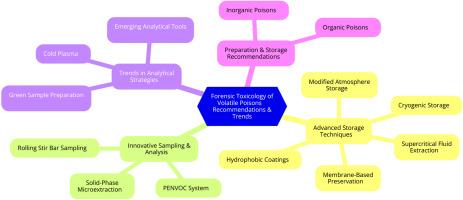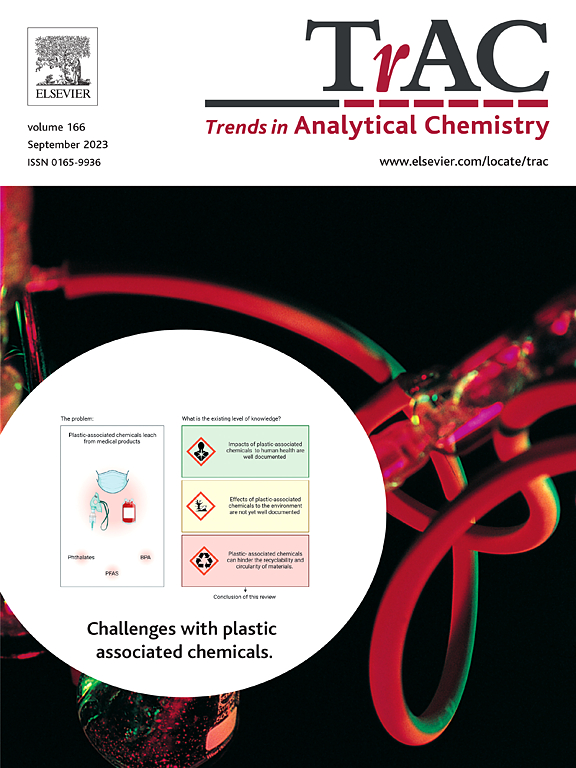挥发性毒物(无机和有机)法医毒理学中生物样本采集(取样)和储存的建议、趋势和分析策略
IF 11.8
1区 化学
Q1 CHEMISTRY, ANALYTICAL
引用次数: 0
摘要
挥发性毒物(包括挥发性无机物(VIP)和有机毒物(VOP))的法医分析在法医毒理学中至关重要。由于这些物质的不稳定性和易消散性,对其进行分析极具挑战性,从样本采集到分析都需要谨慎处理。尽管它们在公共卫生和刑事司法中非常重要,但目前仍缺乏收集和储存生物样本以检测 VIP 和 VOP 的标准化指南。本研究回顾了现有文献,确定了趋势,并制定了有效收集和储存样本的先进策略。血液、尿液、血清、毛发、唾液和指甲等生物样本需要定制方法来保存挥发性分析物。PENVOC 系统和滚动搅拌棒取样等创新技术大大改进了挥发性有机化合物 (VOC) 分析。该研究还探讨了死后微生物的产生,这使得法医乙醇分析变得更加复杂,研究还评估了先进的保存方法,如疏水涂层、膜保存、超临界流体萃取和低温保存。本文章由计算机程序翻译,如有差异,请以英文原文为准。

Recommendations, trends and analytical strategies applied for biological samples collection (sampling) and storage in forensic toxicology of volatile poisons (inorganic and organic)
The forensic analysis of volatile poisons, including volatile inorganic (VIP) and organic poisons (VOP), is crucial in forensic toxicology. These substances are challenging to analyse due to their instability and tendency to dissipate, requiring careful handling from sample collection to analysis. Despite their importance in public health and criminal justice, standardised guidelines for collecting and storing biological samples to detect VIP and VOP are lacking. This study reviews existing literature, identifies trends, and develops advanced strategies for effective sample collection and storage. Biological samples like blood, urine, serum, hair, saliva, and nails need customised approaches to preserve volatile analytes. Innovative techniques such as the PENVOC system and rolling stir bar sampling offer significant improvements in volatile organic compounds (VOC) analysis. The study also addresses post-mortem microbial production, complicating forensic ethanol analysis, and evaluates advanced storage methods like hydrophobic coatings, membrane-based preservation, supercritical fluid extraction, and cryogenic storage.
求助全文
通过发布文献求助,成功后即可免费获取论文全文。
去求助
来源期刊

Trends in Analytical Chemistry
化学-分析化学
CiteScore
20.00
自引率
4.60%
发文量
257
审稿时长
3.4 months
期刊介绍:
TrAC publishes succinct and critical overviews of recent advancements in analytical chemistry, designed to assist analytical chemists and other users of analytical techniques. These reviews offer excellent, up-to-date, and timely coverage of various topics within analytical chemistry. Encompassing areas such as analytical instrumentation, biomedical analysis, biomolecular analysis, biosensors, chemical analysis, chemometrics, clinical chemistry, drug discovery, environmental analysis and monitoring, food analysis, forensic science, laboratory automation, materials science, metabolomics, pesticide-residue analysis, pharmaceutical analysis, proteomics, surface science, and water analysis and monitoring, these critical reviews provide comprehensive insights for practitioners in the field.
 求助内容:
求助内容: 应助结果提醒方式:
应助结果提醒方式:


